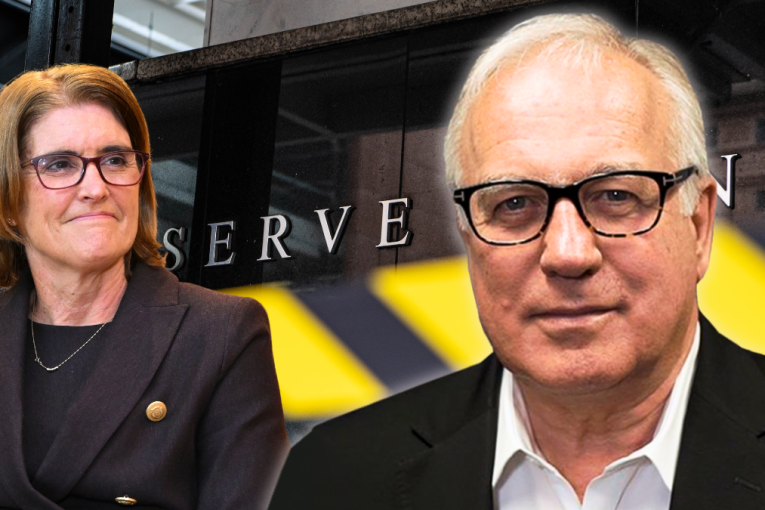Eyeing off Bitcoin? These alternatives are worth considering


Bitcoin has taken another tumble, giving investors another reason to explore alternative investments. Photo: Getty
A funny thing keeps happening to me.
Whenever I tell people I’m a finance journalist they immediately ask me what I think about Bitcoin.
An Uber driver told me he had bought $500 worth for a “bit of fun” and didn’t expect a decent return.
And a few days before that I was on the receiving end of an evangelical lecture about the potential of blockchain – the technology underpinning Bitcoin – from the man who took my photograph for a new passport.
The Uber driver’s attitude made sense given a single tweet from Elon Musk was enough to slash the value of Bitcoin by 7 per cent, never mind the recent crackdown from China.
But it also got me thinking: Would people plough so much money into Bitcoin if they knew they could find decent returns from less volatile investments?
Looking at Bitcoin alternatives? The best first step
Centaur Financial Services managing director Hugh Robertson says anyone hoping to build an investment portfolio should begin by working out their financial goals.
Some people will want to save for a house deposit while others will be looking to build wealth for retirement.
Working out your goals is an important first step because it will help you choose the most appropriate investments.
Corporate regulator ASIC runs a helpful financial literacy site called Moneysmart, which among other things advises people to pay off their debts and set aside three months of living expenses before they begin to invest.
According to Moneysmart, budding investors should work out how long they have to reach their goals and then classify them as short term (0 to two years), medium term (three to five years), or long term (five years or more).
This is known as your investment horizon or time frame and is one of six factors Moneysmart says to consider when picking an investment.
The other five are:
- Return – What is the expected return on the investment? And does it come from income or capital growth?
- Risk – What type of risks are involved, and are you comfortable with them? Generally, the higher the expected return, the higher the risk of the investment
- Access to cash (liquidity) – How long will it take to sell the investment if you suddenly needed the cash?
- The cost of buying and selling – How much will it cost to buy and sell the investment? This includes costs such as brokerage fees when trading shares and things such as stamp duty, conveyancing fees, and mortgage registration costs when buying or selling property
- Tax – How much tax will you pay on earnings (income and capital gains) from the investment?
Got a short-term goal? Take fewer risks
Typically, the more time you have to reach your goal, the more risks you can take with your investments.
In practical terms, this means savings accounts, term deposits and government bonds are the most suitable options when pursuing short-term goals.
This is because they are less likely to fall in value and you can easily access your money.
At the other end of the spectrum, property and shares are better options if you don’t need to access the money for at least five years.
As Moneysmart says, when you’re investing for the long term “you can ride out any short-term falls in value”.
“The risk with investing in diversified portfolios is more defined as volatility,” Mr Robertson said.
“So, usually, over the long run, you tend not to lose money in a diversified portfolio … but it is going to be a bumpy road.”

Source: Moneysmart (ASIC)
Where to start
If you are working towards a short-term goal, then it’s worth committing to a savings plan and setting up a high-interest savings account.
Although no banks are paying particularly high rates at the moment, there is a big difference between those paid by the Big Four and those offered by challenger banks such as ING, which has a conditional rate of 1.35 per cent, or 86 400, which has a conditional rate of 1.2 per cent.
Meanwhile, if you want to gain exposure to government bonds you can do so by buying them through a brokerage service, such as IG, CommSec or nabtrade, or by buying into an investment fund that holds a certain percentage of bonds.
As for people with a longer-term investment horizon, a good way to invest in shares is through a managed account or an exchange-traded fund (ETF).
This is because, like super funds, they allow you to buy a range of different assets and shares in a single trade, which means you can diversify your portfolio without having to spread your money across lots of different investments.
And doing the latter would eat into your returns.
Mr Robertson said a good place to compare the investment funds available to you is Morningstar’s website.
The financial services company allows you to compare the performance of different funds via its fund screener and ETF performance tables.
Choosing the right fund for you then comes down to reading the description of each product on the provider’s website, and working out whether its risk profile, expected returns and recommended investment time frame matches your stated goals.
It’s also worth noting that you should take a good look at their transaction and management fees, as these can massively erode your returns over time.









